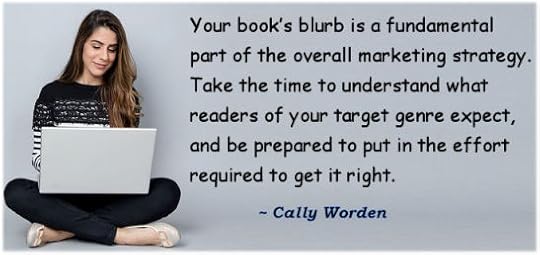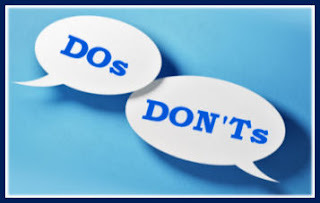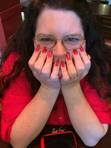Writing The Book Blurb - Part 1

Hello everyone, Winnie Griggs here.
Today I want to speak to you about writing a book blurb, sometimes called back cover copy, for your book. I never paid a lot of attention to what went into one until I dipped my toes in the self-publishing pool and had to write the blurb myself. The first thing I discovered was that it was hard! At least for me. So ever since then I’ve been studying them and reading articles and tips on how to write them and I thought I’d share a little of what I’ve learned. To do the subject justice, I’m going to do this in two posts. Today we’ll cover what it is, why it’s important and some DOs and DON’Ts

What Is A Book Blurb
Just so everyone is on the same page, let me explain what I mean by a book blurb. For the purposes of this post, the book blurb is the short book description you find on the back cover or inside jacket of books you purchase. For an e-book it’s the book description you find front and center on the book’s main page on seller websites.
Why Should You Care
The purpose of a book blurb is to function as a marketing tool or sales pitch. They’re used to attract and entice the reader into purchasing the book. In most cases, the blurb is second only to the cover in what a potential reader uses to make a buy/don’t buy decision. As such, it needs to really be engaging.
So how do you accomplish all of that in such a small word count?

Here are some DOs and DON’Ts. (And keep in mind – THIS IS ONLY MY OPINION. Feel free to disagree if you have found something else that works better for you)
· Don’t confuse your blurb with a synopsis. You don’t want to focus on the plot or try to summarize your entire story. Instead you want to focus on the characters and the emotional resonance of your story. Provide just enough information to intrigue potential readers.
· Don’t give up too much of your blurb space to review quotes and accolades. Those can be placed elsewhere. The blurb is a place to let the reader know what THIS BOOK is about.
· Don’t give away any spoilers. The reasons for that should be obvious, but it can be tempting to show how clever you are with the twists and turns you take with your story – resist! Find other ways to hook your reader enough to want to buy the book and let them enjoy those surprises when they encounter them in the story.
· Don’t forget to highlight the main conflict, the thread that will carry your story. But do leave out the resolution of that conflict – again, no spoilers.
· Do keep it tight and punchy – a good rule of thumb is to shoot for 100-200 words and to make use of both power words and words that evoke emotion.
· Don’t ignore the genre and tone of your book. Whether you are writing a thriller, a fantasy, a romance, a women’s fiction, a cozy or anything else, the genre should be clear from the word choices you use. Is it action packed, suspenseful, humorous, spooky or dark? Reflect that in the tone of your blurb.
· Do make sure you understand the selling points of your story and then highlight them.
· Do show what makes your book stand out from the crowd. How is your Marriage of Convenience, Secret Baby, Second Chance Romance, etc. book different from all the other books out there with the same trope? Find those aspects of your story that are unique—be it the conflict, the character occupations, the setting or something else—and highlight it.
· Do end with a strong hook—leave your reader with an irresistible urge to scoop up your book to learn more

That wraps up Part I. Next time we’ll do a deep dive into the components of a blurb and look at some examples.
So do you have anything to add to my list of DOs and DON'Ts? Do you pay attention to a book's blurb when making a buy decision?
Leave a comment to be entered in a drawing for a book from my backlist.



